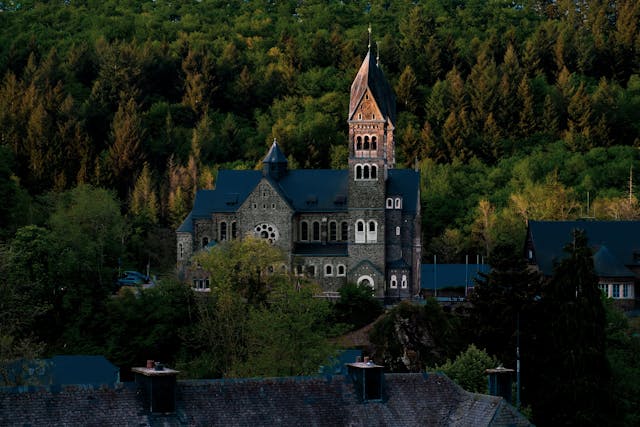Luxembourg bans swimming in Lake Haute-Sûre

Ted Balmer, Unsplash
On 12 June 2025, regular water quality monitoring detected a significant bloom of cyanobacteria, commonly known as blue algae, on all beaches of Lake Haute-Sûre. The Ministry of the Environment declared an immediate ban on bathing, citing sanitary risks and the 2009 regulations.
Cyanobacteria are not just an aesthetic problem. Some of their species produce toxins that are dangerous for humans, pets, livestock and aquatic life. The lake was analysed by the LIST (Luxembourg Institute of Science and Technology) laboratory, which found that the toxin levels exceeded permissible levels.
Getting toxins into the body - through the skin, by inhaling water droplets, or by swallowing - can cause:
- headaches
- skin irritations or burns
- nausea and digestive disorders
Residents who feel sick after coming into contact with the water are urged to seek immediate medical attention and report possible exposure to toxic cyanobacteria.
Based on the Ministry of Health's assessment, the authorities advise:
- Do not allow dogs or other animals to drink water from the lake
- avoid all contact with water, including swimming, water sports and even fishing
- Do not consume fish caught from the lake and, if possible, avoid fishing if algal film is visible.
Observations of 'blooms' can be reported via the Bloomin'Algae app, and all occurrences are recorded on the cyanowatch.lu portal.
Cyanobacteria normally multiply in standing, nutrient-rich water with high temperatures and sunlight. Luxembourg is no exception: such outbreaks most often occur between August and October, but in recent years, against a background of climate change and rising phosphorus levels, they have started to appear earlier and earlier. The main sources of pollution are agricultural and waste water, as well as fertilisers that enter rivers and lakes during rains. The problem is not unique to Luxembourg: such episodes are increasingly common around the world.
According to experts, the only sustainable way to combat cyanobacteria blooms is to reduce the phosphorus and nitrogen content of water bodies. This is the focus of the third national management plan for the Rhine and Maas river basins. As part of the plan, wastewater treatment plants are being modernised, the use of fertilisers in agriculture is being reduced, and buffer zones with vegetation along the banks are being created to limit the release of nutrients into the water.
Despite the seriousness of the situation, drinking water from Lake Haute-Sûre remains safe. The water is drawn from a depth of 25 metres, where bacteria levels are extremely low and modern filtration systems reliably eliminate any possible toxins.




